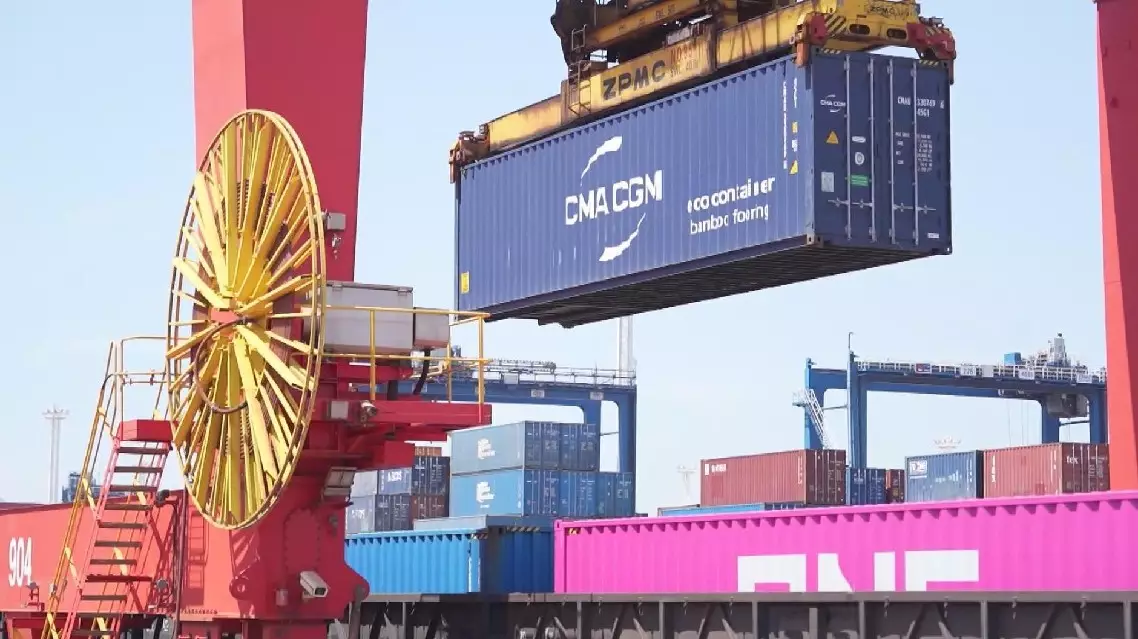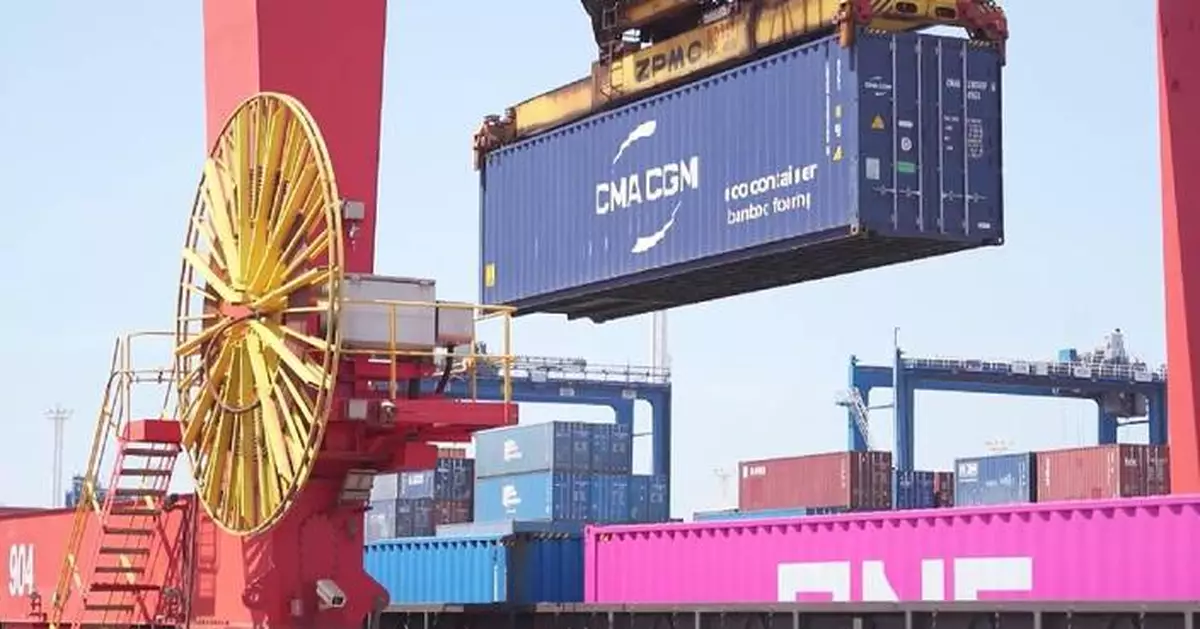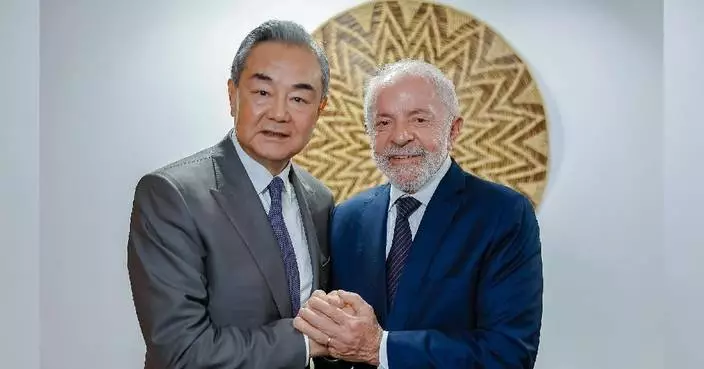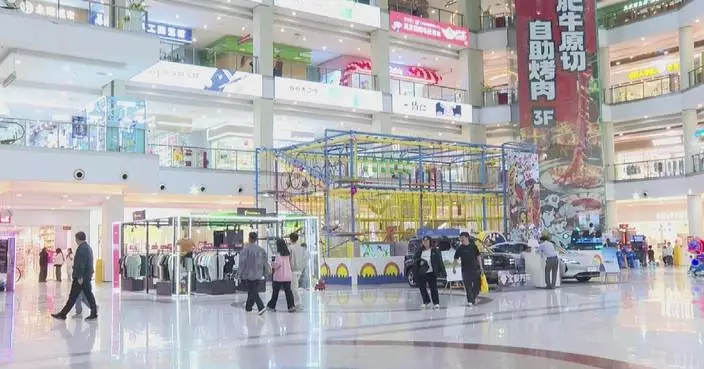China's busiest port, the Port of Ningbo Zhoushan in the eastern province of Zhejiang, has made significant progress in adopting modes of green transportation, after the port introduced sea-rail intermodal transport and cutting-edge logistics solutions, in keeping with the Chinese government's carbon reduction efforts.
The port introduced the mode of sea-rail intermodal transport in 2004. Since then, the sea-rail intermodal transport business has seen exponential growth, increasing nearly a thousand-fold. It has cut fuel consumption by 500 million liters, saving carbon emissions costs by nearly 100 million yuan (13.8 million U.S. dollars) for clients.
"Now, with the adoption of the electric energy model of railway for transportation, we can achieve zero carbon emissions," said Zhu Shiliang, an assistant environment energy specialist at Ningbo BeiLun No.1 Container Terminal Co. Ltd.
The port introduced the one-waybill shipping service in 2018 to streamline services. This approach simplifies the documentation process for customers and eliminates the complexities of intermediate document exchanges.
"The one-waybill service refers to shipping houses issuing a Through Bill of Lading at the point of origin. It avoids the cumbersome process of document exchange in the shipping process," said Zhang Zhoulong, deputy director of the sea-rail intermodal center of the Ningbo-Zhoushan Port.
Last year, Southeast Logistics Group leveraged sea-rail intermodal transport at Ningbo-Zhoushan Port to export 200,000 Twenty-foot Equivalent Units (TEUs) of products, valued at 51.3 billion yuan (about 7.10 billion U.S. dollars).
Li Jie, deputy general manager of Southeast Logistics Group, witnessed the growing popularity of this efficient and cost-effective transportation mode.
"Now, we handle about 2,000 to 2,500 high cube containers for sea-rail intermodal transport every week, accounting for 25 percent of the whole group's business. More and more customers are willing to choose this convenient, economical, and efficient way of transportation.," Li said.
The port's business is also fueled by a logistics cloud platform that integrates information on sea ports, land ports, airports. The platform provides shippers with a comprehensive solution for streamlined logistics operations, through which shippers can order and book a container, make declarations at the customs, and achieve multimodal transport. Shippers can also monitor shipment information on the platform.
"Right now, the northern parts of Zhejiang have been fully covered by our platform. This results in over 90-percent of road transport shifting to the sea-river and sea-rail intermodal transport. The overall proportion of the sea-river and sea-rail intermodal transport exceeds 60 percent," said Yu Bo, technical director of Zhejiang Four Port Linkage Development Co., Ltd.
The port's success in green transition reflects China's broader commitment to optimizing transportation structures.
The country has also started the construction of 25 national comprehensive freight hub cities, aiming at enhancing supply chain efficiency and promoting multimodal transportation. "At present, an intensive and efficient comprehensive transportation system has been initially established. In 2023, the freight volume by rail and by water surged 35.8 percent and 40.7 percent respectively compared with that in 2017, and the green transport of coal and iron ore at major coastal ports surpassed 90 percent and 78 percent respectively. More than 10 million TEUs of cargo were moved via rail-water intermodal transportation, up 15.9 percent year on year," said Fang Hai, deputy director of China Academy of Transportation Science.
In September 2020, Chinese President Xi Jinping announced that the country aims to hit peak carbon emissions by 2030 and achieve carbon neutrality by 2060.

East China's Ningbo Port promotes sea-rail intermodal green transport




















































